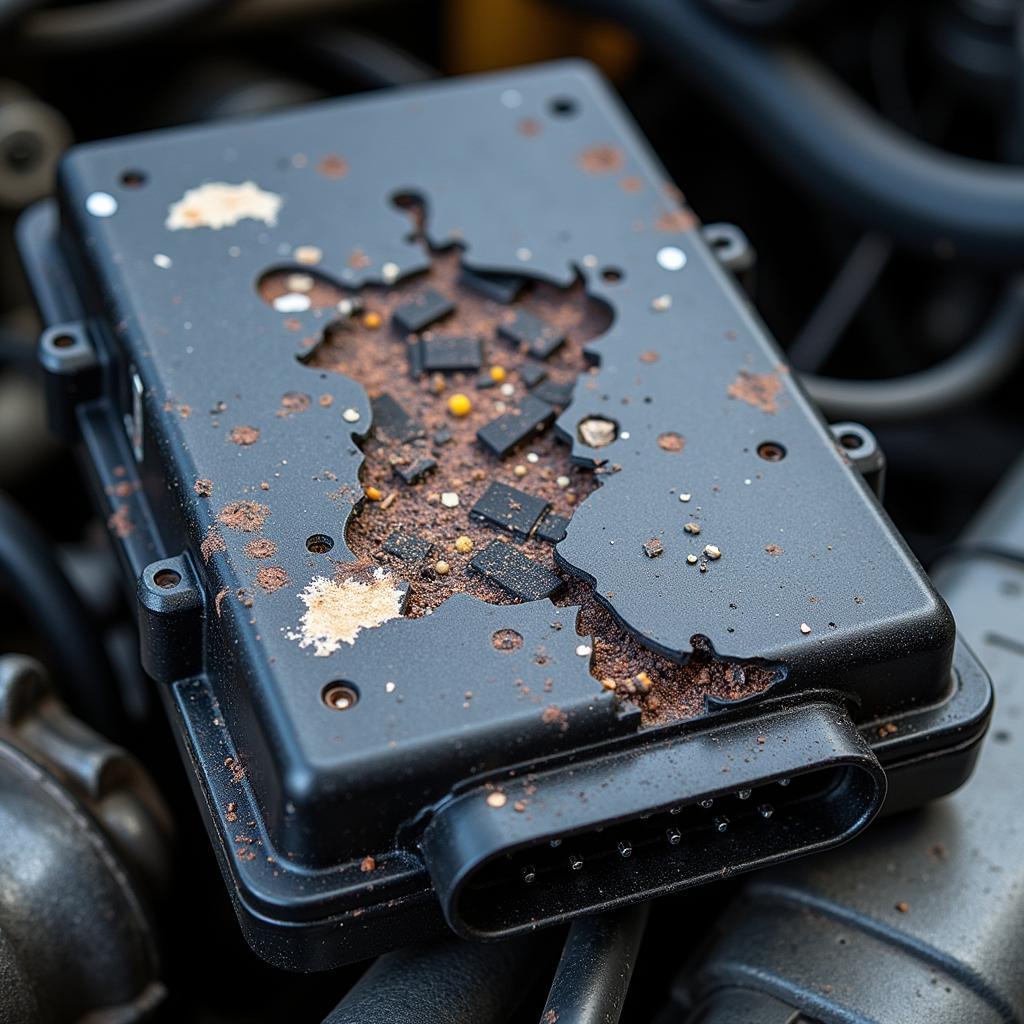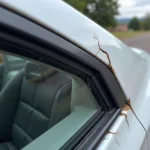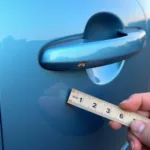When lightning strikes a vehicle, the immense electrical surge can wreak havoc on the car’s electrical system, leaving it shorted out and inoperable. Repairing a car electrical system shorted out by lightning requires specialized knowledge and diagnostic tools. This article will delve into the intricacies of this complex repair process, offering valuable insights for car owners and professionals alike.
Understanding the Damage from a Lightning Strike
A lightning strike can deliver millions of volts to a vehicle, overwhelming its electrical system. This surge can travel through the car’s metal body and wiring, damaging various components. Common issues include:
- Fried fuses and relays: These are often the first line of defense and will likely blow to protect other components.
- Damaged control modules: Engine control units (ECUs), transmission control modules (TCMs), and other crucial modules are susceptible to damage.
- Malfunctioning sensors: Sensors for various systems like ABS, airbags, and the engine can be affected.
- Burned wiring harnesses: The intense current can melt or burn wiring, leading to shorts and open circuits.
- Damaged electronics: Infotainment systems, navigation, and other electronic accessories can be rendered useless.
Diagnosing a Lightning-Shorted Electrical System
Diagnosing a car electrical system shorted out by lightning requires a systematic approach. A qualified technician will typically begin by:
- Visually inspecting the vehicle: Looking for external damage and signs of burning.
- Checking fuses and relays: Replacing any blown fuses and testing relays for proper function.
- Scanning the vehicle’s computer system: Using a diagnostic scanner to identify any fault codes stored in the various modules.
- Testing the battery and charging system: Ensuring the battery is holding a charge and the alternator is functioning correctly.
- Inspecting wiring harnesses: Carefully examining the wiring for burns, melts, or breaks.
- Testing individual components: Using specialized tools to test sensors, modules, and other components for proper operation.
Repairing a Car Electrical System Shorted Out by Lightning
Repairing a lightning-struck vehicle can range from simple fuse replacements to complex module replacements and wiring repairs. The repair process generally involves:
- Replacing damaged fuses and relays: This is often the first and simplest step.
- Repairing or replacing wiring harnesses: Damaged wiring may need to be repaired or replaced entirely.
- Replacing damaged modules: Faulty modules will need to be replaced with new or reprogrammed units.
- Testing and calibrating sensors: After repairs, sensors may need to be tested and recalibrated.
- Performing a comprehensive system check: Ensuring all systems are functioning correctly after repairs.
“Lightning damage can be deceptive. What seems like a minor issue can often mask more extensive damage to hidden components,” advises John Smith, ASE Certified Master Technician at Advanced Auto Solutions. “A thorough diagnosis is crucial to ensure all affected parts are identified and repaired correctly.”
Preventing Lightning Damage to Your Car
While there’s no foolproof method to prevent lightning damage, there are precautions you can take:
- Park in a garage or covered area: This offers the best protection.
- Avoid parking under trees: Trees attract lightning and can fall on your vehicle.
- Install a surge protector: While not foolproof, a surge protector can help mitigate the effects of a lightning strike.
Conclusion
Repairing a car electrical system shorted out by lightning is a complex undertaking requiring specialized expertise. From diagnosing the extent of the damage to replacing affected components, a thorough approach is essential for a successful repair. By understanding the potential damage and taking preventative measures, you can protect your vehicle from the devastating effects of a lightning strike. If your car has been struck by lightning, seek professional assistance immediately.
FAQ
- Does car insurance cover lightning damage? Typically, comprehensive car insurance covers lightning damage.
- Can a lightning strike total a car? Yes, a severe lightning strike can cause enough damage to total a vehicle.
- How long does it take to repair lightning damage to a car? The repair time depends on the extent of the damage and can range from a few days to several weeks.
- Can lightning damage be prevented entirely? No, but taking preventative measures can significantly reduce the risk.
- Are there any after-effects of a lightning strike on a car? Yes, even after repairs, some lingering electrical issues might occur.
Need help? Contact us via WhatsApp: +1(641)206-8880, Email: [email protected]. We have a 24/7 customer support team.
“Don’t underestimate the power of preventative measures. Parking your car in a garage during a thunderstorm can save you a lot of trouble and expense down the road,” adds Jane Doe, Lead Electrical Engineer at Automotive Electrical Innovations.



